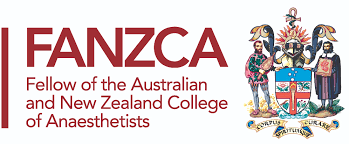Key information:
Further patient information is available from the Australian Society of Anaesthetists asa.org.au/patients
Anaesthesia
Anaesthesia is a state of controlled, temporary loss of sensation or awareness that is induced for medical purposes. It may include analgesia (pain relief), paralysis (muscle relaxation), amnesia (temporary memory loss), or unconsciousness.
There are several types of Anaesthesia:
General Anaesthesia
This is the most common form of Anaesthesia. This is typically known to the public as “being asleep”.
Sedation
From minimal to deep sedation, there are various “depths” of sedation which your Anaesthetist can administer depending on your procedure, your health and of course, your request.
Regional Anaesthesia
This can be divided into Central and Peripheral Anaesthesia. Regional Anaesthesia can be used alone or in combination with General Anaesthesia and Sedation above.
- Central Anaesthesia e.g. Spinal or Epidural anaesthesia
- Peripheral Anaesthesia e.g. Range from Nerve Blocks to small areas that can be numbed safely with local anaesthetic
The Role of the Anaesthetist
Before your procedure, your anaesthetist will ask you a series of questions, examine you and go through your investigation results (blood tests, heart reports, X-Rays etc.). They will then explain which anaesthetic technique is most appropriate for your procedure and answer any questions you may have. Your anaesthetist can also provide pain relief during childbirth and delivery. Anaesthetist are also often called to assist with critically unwell patients in the hospital.
The most common role of the Anaesthetist is to keep you safe before, during and after your procedure. Thanks to our Anaesthetists and the standards imposed in Australia, you are in one of the safest countries in the world to have Anaesthesia and Surgery.
Our Specialist Anaesthetist are fully qualified doctors. In Australia, after completion of their medical degree, they complete a mandatory two general years of medicine, followed by further five (or more) years of training in the specialty of anaesthesia. Many go on to do further fellowships in Australia and abroad.
You can be assured your anaesthetist is up to date with the latest techniques, as they must continue to update their skills by participation in continual professional development programs (CPD) as stipulated by the Australian and New Zealand College of Anaesthesia (ANZCA).





